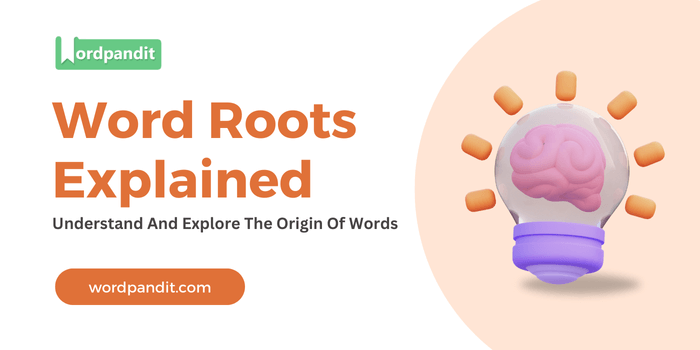Aniso: The Root of Inequality in Nature and Science
Discover the dynamic and fascinating root "Aniso," derived from the Greek word meaning "unequal." Found in words like "anisotropic" and "anisogamy," this root serves as the linguistic foundation for concepts describing disparity and variation in fields ranging from biology to physics.
Table of Contents
- Introduction: The Essence of Aniso
- Etymology and Historical Journey
- Mnemonic: Unlocking the Power of Aniso
- Common Aniso-Related Terms
- Aniso Through Time
- Aniso in Specialized Fields
- Illustrative Story: Aniso in Action
- Cultural Significance of the Aniso Root
- The Aniso Family Tree
- FAQs about the Aniso Word Root
- Test Your Knowledge: Aniso Word Root Quiz
- Conclusion: The Ever-Present Inequality of Aniso
Introduction: The Essence of Aniso
Have you ever observed how snowflakes, though symmetrical, are never identical? Or how biological cells differ in size, shape, or structure? These phenomena illustrate the concept of "Aniso," a root word signifying "unequal." Pronounced "an-eye-so," this Greek root underpins terms describing asymmetry, diversity, and imbalance across nature and science. Whether in anisotropic materials or anisogamous reproduction, Aniso highlights the beauty and complexity of inequality.
Etymology and Historical Journey
The root "Aniso" comes from the Greek prefix an- (not, without) and isos (equal). This combination gives us "unequal" or "dissimilar." First appearing in ancient Greek texts to describe imbalances in geometry and nature, Aniso entered the scientific lexicon in the 19th century as disciplines like biology and physics advanced. It now serves as a cornerstone for describing asymmetry across various contexts.
Mnemonic: Unlocking the Power of Aniso
Imagine a seesaw with uneven weights on either side—one higher, one lower. This visual perfectly encapsulates "Aniso," emphasizing inequality.
Mnemonic Device: “Aniso shows life’s unequal sides, from anisotropic crystals to anisogamous tides.”
Common Aniso-Related Terms
- Anisotropic (an-eye-so-tro-pik)
- Definition: Exhibiting different properties in different directions.
- Example: "Anisotropic crystals refract light uniquely depending on its angle of incidence."
- Anisogamy (an-eye-sog-uh-mee)
- Definition: Sexual reproduction involving gametes of different sizes or forms.
- Example: "Anisogamy is evident in humans, where sperm and egg differ significantly in size."
- Anisometropia (an-eye-so-meh-troh-pee-uh)
- Definition: A condition where the two eyes have unequal refractive power.
- Example: "Anisometropia often requires corrective lenses to balance vision."
- Anisocoria (an-eye-so-koh-ree-uh)
- Definition: Unequal pupil sizes.
- Example: "Anisocoria can indicate underlying neurological conditions."
- Anisomerous (an-eye-som-er-us)
- Definition: Having parts that are unequal in number or size.
- Example: "Flowers with anisomerous petals exhibit a unique beauty."
Aniso Through Time
- Anisogamy:
- Historical Context: First identified in algae and fungi, anisogamy expanded to describe reproduction across plants and animals.
- Modern Relevance: Central to understanding evolutionary biology and reproductive strategies.
- Anisotropic Materials:
- Early Use: Studied in crystal optics during the 19th century.
- Contemporary Application: Vital in engineering and material sciences for designing structures with directional properties.
Aniso in Specialized Fields
- Physics:
- Term: Anisotropic Conductors
- Application: Materials like graphene exhibit directional conductivity, crucial in electronics.
- Biology:
- Term: Anisogamy
- Application: Explains reproductive strategies and evolutionary fitness.
- Medicine:
- Term: Anisocoria
- Application: Diagnoses conditions like brain trauma or glaucoma.
- Optics:
- Term: Anisotropic Lenses
- Application: Designed for specialized visual applications, such as polarized sunglasses.
Illustrative Story: Aniso in Action
A physicist, Dr. Lina, was tasked with developing anisotropic materials for a spacecraft. Her goal was to create a heat shield that dispersed thermal energy unevenly, protecting critical areas. Meanwhile, her biologist friend, Maya, studied anisogamy in marine organisms, unveiling its role in species survival. Both women marveled at how Aniso connected their seemingly disparate fields, symbolizing nature's tendency toward functional inequality.
Cultural Significance of the Aniso Root
The root "Aniso" reflects the world's inherent asymmetry, from artistic compositions to scientific discoveries. Traditional art often embraces asymmetry to create visual interest, while science uses Aniso to unravel complex patterns in nature. This dual role underscores its relevance across disciplines.
The Aniso Family Tree
- Iso- (Equal)
- Example: Isometric (equal dimensions).
- Relevance: Complements "Aniso" by highlighting symmetry.
- Hetero- (Different)
- Example: Heterogeneous (diverse in composition).
- Relevance: Shares a theme of variation.
- A- (Not)
- Example: Asymmetry (lack of symmetry).
- Relevance: Often pairs with "Iso" to denote imbalance.
FAQs About " Aniso "
Q: What does "Aniso" mean?
A: "Aniso" means "unequal" or "not equal." It is derived from the Greek prefix "an-" (not, without) and "isos" (equal). It is used to describe imbalance, disparity, or variation in fields like biology, physics, and medicine.
Q: What is anisotropic, and where is it used?
A: Anisotropic refers to materials or substances that exhibit different properties in different directions. For example, an anisotropic crystal refracts light differently based on the angle of incidence. This concept is widely used in physics, engineering, and materials science to design objects with directional properties.
Q: How does anisogamy differ from isogamy in reproduction?
A: Anisogamy describes sexual reproduction involving gametes of unequal sizes or forms, such as a small sperm and a large egg. In contrast, isogamy refers to reproduction involving gametes of the same size and shape. Anisogamy is more common in higher organisms, while isogamy is observed in simpler organisms like algae.
Q: What causes anisocoria, and why is it significant?
A: Anisocoria is a condition where the pupils of the eyes are unequal in size. It can be caused by neurological issues, eye trauma, medications, or congenital factors. Its diagnosis is significant because it may indicate underlying conditions like brain injury or glaucoma.
Q: What is anisometropia, and how is it treated?
A: Anisometropia is a condition where the two eyes have unequal refractive power, leading to blurry or double vision. It is often treated with corrective lenses, contact lenses, or, in severe cases, refractive surgery.
Q: Why are anisotropic materials important in technology?
A: Anisotropic materials, such as those with directional heat or electrical conductivity, are critical in technology. They enable advanced designs in fields like semiconductors, optics, and aerospace, where specific directional properties are necessary for efficiency and functionality.
Q: How does anisotropy relate to natural phenomena?
A: Anisotropy in nature is evident in phenomena like the growth of crystals or the flow of lava, where properties like strength or viscosity differ based on direction. Understanding anisotropy helps scientists predict behavior in natural and engineered systems.
Test Your Knowledge: " Aniso " Mastery Quiz
1. What does the root "Aniso" mean?
2. Which field extensively uses the term "anisotropic"?
3. What is anisogamy?
4. What does anisometropia describe?
5. What does anisocoria indicate?
Conclusion: The Ever-Present Inequality of Aniso
The root "Aniso" reveals the beauty of asymmetry in nature and science. From the anisotropic properties of crystals to the reproductive strategies of anisogamous species, it highlights how inequality drives complexity and functionality. By exploring Aniso, we gain a deeper appreciation for the nuanced imbalances that shape our world.













